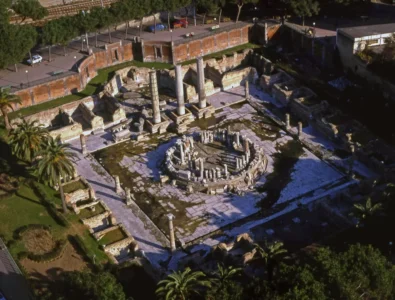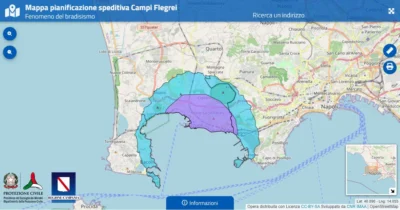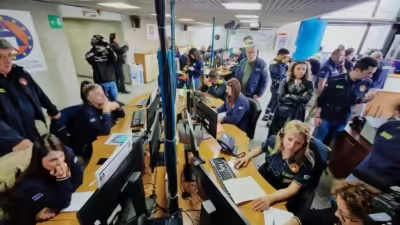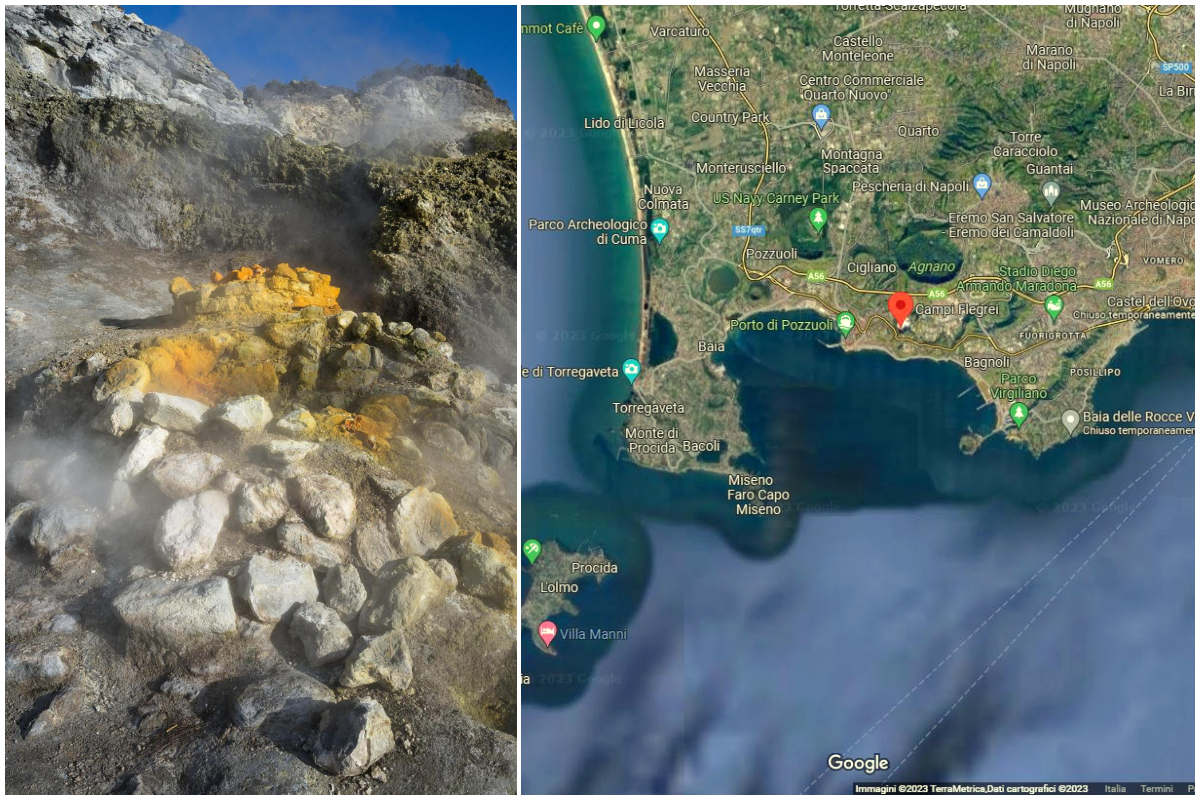Phlegrean bradyseism: history, impacts and risk management in the Phlegraean Fields
History and scientific observations
Phlegraean bradyseism is not an isolated phenomenon in the global volcanic context, but it is particularly evident in the Phlegraean Fields area. One of the best historical examples of this phenomenon is provided by the Macellum in Pozzuoli, commonly known as the Temple of Serapis. The columns of the Macellum show marks left by lithodomata, mollusks that inhabit the intertidal zones, thus indicating changes in sea level caused by soil deformation.

Since the 4th century A.D., it has been possible to monitor soil changes thanks to these biological marks, but it is only since the 20th century that more precise techniques such as geodetic leveling and monitoring using GPS and interferometric data have been introduced, allowing changes to be measured and monitored in real time.
Historical and modern bradyseismic crises
The bradyseismic crises of 1969-1972 and 1982-1984 represent the most intense and studied moments of this phenomenon. The first crisis saw an uplift of about 170 cm in 1970-72, causing considerable damage in Pozzuoli and necessitating the evacuation of part of the population. The second crisis, however, led to an additional 185 cm uplift between 1982 and 1984, recording more than 5,000 significant seismic events.
Today, thanks to technological advances, the monitoring capability has greatly improved, allowing scientists to follow the development of the phenomenon in near-real time. Recent seismic activity has shown an increase, with events culminating in the September 27 and October 2, 2023 quakes, which reached magnitudes of 4.2 and 4.0.

The map showing the intervention zones, most affected by bradyseism (particularly in the purple one, the greatest effects could be recorded), considered by the Dispatched Emergency Plan.
Response of authorities and preventive measures
In response to the increasing seismic activity and persistent bradyseism, the Italian government adopted preventive measures, including Decree Law No. 140 of Oct. 12, 2023, which was later converted into law. These measures include analyzing the seismic vulnerability of built-up areas and upgrading transportation infrastructure and essential services to improve the region’s resilience.
April 22 exercise: a crucial test for bradyseism management
April 22, 2024 marked a pivotal moment in the Civil Defense System‘s ongoing efforts to deal with the bradyseism phenomenon in the Phlegraean Fields. On that date, one of the largest exercises planned for the year took place, involving institutional stakeholders and the school population of Pozzuoli, Naples and Bacoli. The main objective was to test the readiness and effectiveness of operational procedures in response to a possible worsening of bradyseism-related conditions, following the protocols established by the October 12, 2023, Dispatched Emergency Plan.

During the exercise, simulated scenarios included the evacuation of four schools, with school personnel and students being led to predetermined collection points. Simultaneously, damage assessments of the buildings were simulated to assess structural integrity and ensure the safety of all occupants. This operation tested the ability of coordination centers and operations rooms to effectively manage an emergency, coordinating actions in the field and ensuring smooth communication between the various agencies involved.
Building a Resilient Community in the Face of Ongoing Geological Challenges
As the Phlegraean Fields continue to be shaped by the dynamic and unpredictable nature of bradyseism, the commitment of local and national authorities, scientific communities, and the citizens themselves to understanding and mitigating its effects is more crucial than ever. The proactive measures and continuous monitoring implemented are testament to the advancements in both technology and cooperative strategies in disaster risk management. With ongoing research, improved communication strategies and the sustained engagement of all stakeholders, the region is setting a global standard for managing volcanic risk and safeguarding human life and infrastructure against the capricious whims of nature. As we look to the future, the lessons learned from the Phlegraean Fields can undoubtedly contribute to better understanding and managing geological phenomena worldwide.


